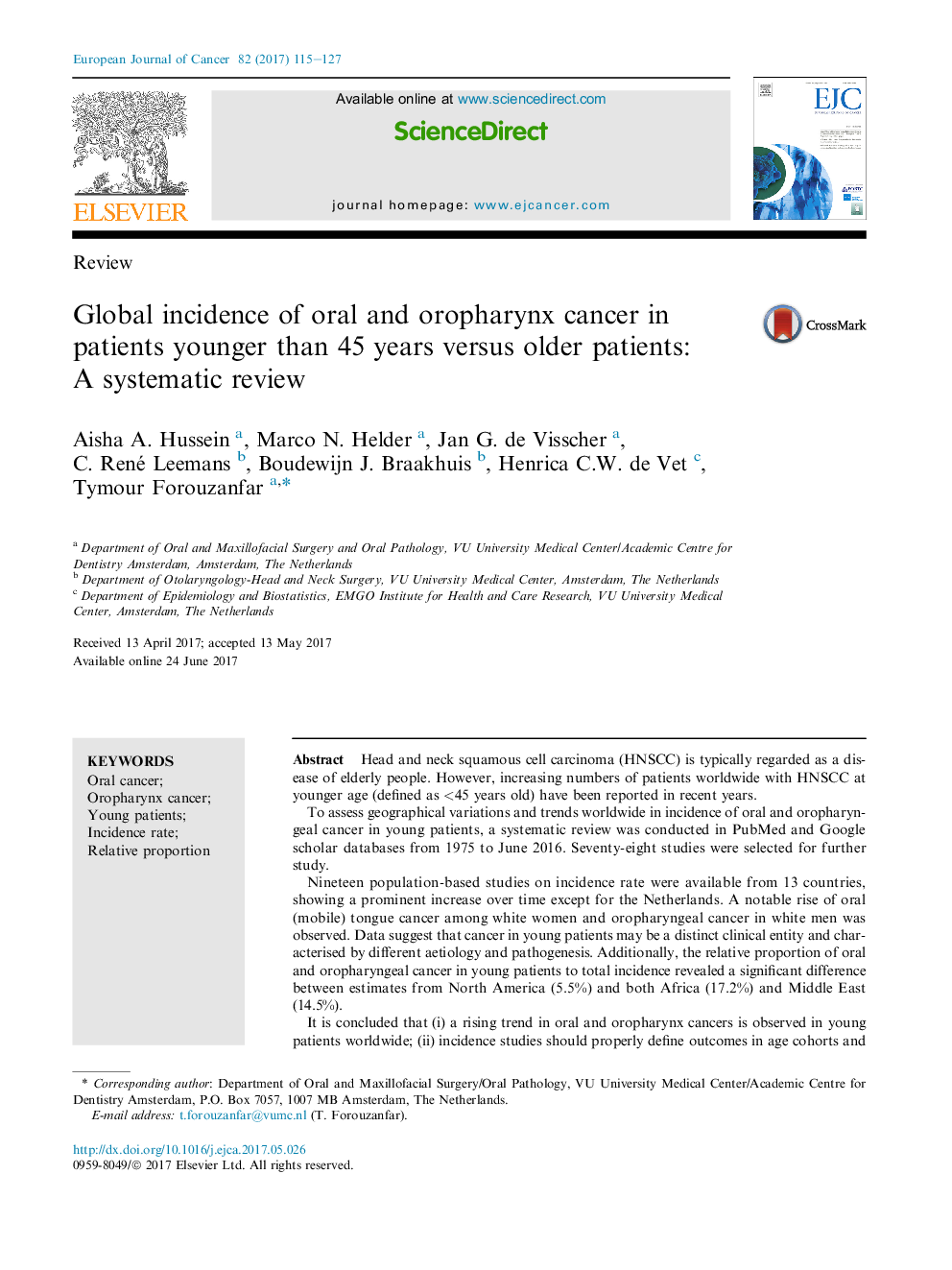| Article ID | Journal | Published Year | Pages | File Type |
|---|---|---|---|---|
| 5526432 | European Journal of Cancer | 2017 | 13 Pages |
â¢This systematic review assesses the global head and neck squamous cell carcinoma (HNSCC) incidence in young adults (<45 year).â¢In this group, a worldwide rising trend in HNSCC is observed.â¢Relative proportions of 'young' HNSCC versus total incidence vary between continents.â¢Data suggest that cancer in young patients may be a distinct clinical entity.â¢There is an urge to identify new aetiological factors in these young patients.
Head and neck squamous cell carcinoma (HNSCC) is typically regarded as a disease of elderly people. However, increasing numbers of patients worldwide with HNSCC at younger age (defined as <45 years old) have been reported in recent years.To assess geographical variations and trends worldwide in incidence of oral and oropharyngeal cancer in young patients, a systematic review was conducted in PubMed and Google scholar databases from 1975 to June 2016. Seventy-eight studies were selected for further study.Nineteen population-based studies on incidence rate were available from 13 countries, showing a prominent increase over time except for the Netherlands. A notable rise of oral (mobile) tongue cancer among white women and oropharyngeal cancer in white men was observed. Data suggest that cancer in young patients may be a distinct clinical entity and characterised by different aetiology and pathogenesis. Additionally, the relative proportion of oral and oropharyngeal cancer in young patients to total incidence revealed a significant difference between estimates from North America (5.5%) and both Africa (17.2%) and Middle East (14.5%).It is concluded that (i) a rising trend in oral and oropharynx cancers is observed in young patients worldwide; (ii) incidence studies should properly define outcomes in age cohorts and use a consensus cut-off for young patients; (iii) more population-based studies should be performed in non-Western regions to get accurate global measures of incidence for these cancers in young subpopulations and (iv) there is an urge to identify new aetiological factors in these young patients.
